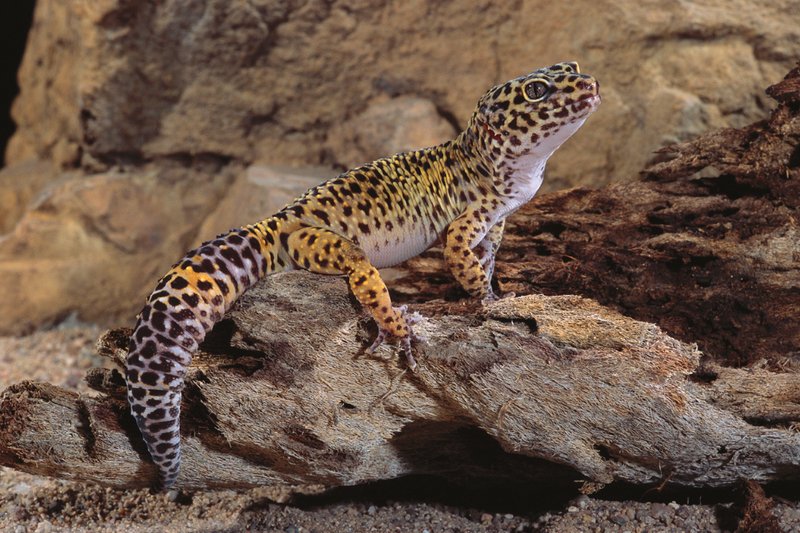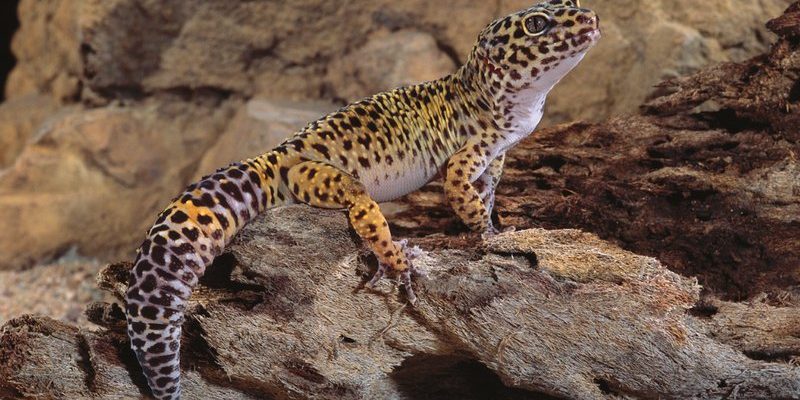
Imagine a sun-soaked desert where the leopard gecko slinks silently across the sandy ground. Their colors and patterns blend beautifully into the landscape, acting like a natural camouflage. By understanding how they survive and thrive in such a harsh environment, we can learn more about the ecosystem as a whole. The leopard gecko isn’t just an adorable pet; it’s also a key player in the web of life in the arid regions of the world.
Habitat: Where Do Leopard Geckos Live?
Leopard geckos are native to the dry, rocky areas of Afghanistan, Pakistan, and parts of India. They thrive in arid environments, which means they’ve adapted to survive with very little water. Their natural habitat includes rocky desert regions and scrubland, where they can easily hide from predators.
In these habitats, you might typically find them under rocks or in burrows, which provide shelter not only from the heat but also from potential threats. This ability to blend in helps them escape predators like birds and small mammals. They’re more than just survivors; they’re also incredible foragers. Their diet mainly consists of insects, which they hunt at night when it’s cooler, making them nocturnal hunters.
Diet and Hunting Strategies
Leopard geckos are insectivores, meaning they primarily eat insects. You might be surprised to learn that they’re not picky eaters. In the wild, their diet can include crickets, mealworms, and even small invertebrates. This diverse menu is essential for their survival in the wild.
Here’s the thing: the way they hunt is pretty fascinating. Leopard geckos use a technique called “sit-and-wait” predation. They’ll find a good spot to sit quietly and wait for unsuspecting prey to pass by. When an insect comes close, they swiftly pounce. Slower than some of their speedy relatives, they still make up for it with patience and precision. This hunting strategy teaches us about the balance of the ecosystem, where each creature plays a part in controlling insect populations.
Predators and Threats
While leopard geckos are skilled hunters, they also face threats in their natural habitats. Predators like snakes, birds of prey, and larger mammals see them as a tasty snack. Because of their small size and tendency to remain still, they have to rely heavily on camouflage.
But that’s not the only challenge they face. Habitat destruction is a significant threat to leopard geckos. As humans continue to expand into their natural space, these reptiles lose their homes. Additionally, the pet trade can sometimes lead to unsustainable hunting practices, putting local populations at risk. Understanding these threats reminds us of the importance of conservation efforts.
Adaptations: How They Survive
Leopard geckos have some unique adaptations that help them survive in harsh environments. For instance, their thick skin helps them retain moisture, an essential feature in desert areas. Let me explain further: while many reptiles are covered in smooth scales, leopard geckos have a more textured skin that reduces water loss.
Moreover, they can also drop their tails when threatened. This isn’t just a party trick; it serves a purpose. The tail can wriggle and distract predators while the gecko makes its escape. Once safe, the gecko can regenerate its tail over time, although it may not look exactly the same as the original. This fascinating adaptation highlights how the leopard gecko has evolved to thrive under pressure.
Breeding and Lifecycles
Breeding plays a vital role in maintaining populations of leopard geckos in their natural habitats. They have a straightforward mating ritual that typically occurs in the spring. Female leopard geckos lay eggs in hidden spots, often in sandy or loose soil.
An interesting fact about their lifecycle is that the temperature of the environment can affect the sex of the hatchlings. Warmer temperatures tend to produce more females, while cooler temperatures lead to more males. This unique trait is essential for maintaining balance in the population, allowing them to adapt to changing environmental conditions.
The Leopard Gecko’s Role in Ecosystems
Leopard geckos are more than just beautiful pets or interesting creatures; they play a vital role in their ecosystems. By controlling insect populations, they help maintain a healthy balance in their habitat. If there were too many insects, it could disrupt other species and plants, leading to an imbalance.
Additionally, leopard geckos also become a food source for various larger predators. Their role in the food web serves to support biodiversity in their environment. Each species, including the leopard gecko, contributes to the overall health of the ecosystem.
Conservation Efforts
As the challenges facing leopard geckos grow, so do efforts to conserve their populations. Conservation groups are working hard to protect natural habitats from destruction. By raising awareness and creating protected areas, they strive to ensure that leopard geckos can continue to thrive.
You might be wondering how you can help. Supporting organizations that focus on reptile conservation, avoiding the exotic pet trade, and spreading awareness about the importance of biodiversity are all excellent ways to contribute. It’s all about appreciating these amazing creatures while advocating for their future.
Understanding the role of leopard geckos in their natural habitat opens our eyes to the intricate relationships that exist in nature. They’re not just pets; they’re essential players in their ecosystems, helping to control insect populations and acting as a food source for other predators. By learning about these amazing reptiles and the challenges they face, we can all contribute to protecting their future and, in turn, the health of our planet. Whether through informed pet ownership or supporting conservation efforts, every step counts in ensuring that leopard geckos and their habitats thrive for generations to come.

